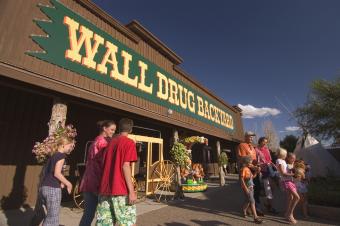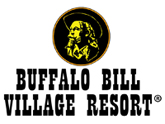Badlands National Park
Location
Millions of years of wind, water and erosion have created the chiseled spires, deep canyons and jagged buttes of Badlands National Park.
On-going rains, freezes and thaws have revealed millions of years of sediment that paint a colorful landscape on the prairies of southwestern South Dakota. When the Lakota first encountered the striking, moon-like landscape, they aptly called the area “Mako Sica” or “bad land.” Early French trappers also described the area as “bad land” after difficult travels over the rugged terrain. Today, visitors to Badlands National Park can explore this natural wonder on foot, on horseback or by car as they travel the scenic loop or roam the many trails.
Badlands Wildlife
Covering 244,000 acres, Badlands National Park is one of the largest protected mixed-grass prairies in the United States . The park, located south of Interstate 90 between Exits 110 and 131, is home to many species of wildlife including bighorn sheep, bison, the swift fox and the endangered black-footed ferret. Antelope and deer are commonly seen roaming near roadways and picnic areas. More than 64,000 acres of the park are designated as wilderness.
Paleontology in the Park
Badlands National Park contains the world's richest deposits of fossils from the Oligocene epoch. Paleontologists have uncovered the remains of ancient three-toed horses, tiny deer-like creatures, turtles, a saber-toothed cat and other prehistoric animals.
Hiking and Camping
Those seeking extreme adventure can wander through the wilderness or backcountry of Badlands National Park. Camping is available at two campgrounds in the park: Cedar Pass Campground and Sage Creek Campground. The jagged spires and buttes provide moderate to hard hikes along the miles of designated trails. Sturdy hiking shoes are strongly recommended to avoid injury.
The South Unit
Approximately half of Badlands National Park lie within the Pine Ridge Indian Reservation and contain several sites that are considered sacred to the Oglala Lakota. The National Park Service and the tribe work closely together to co-manage and protect this part of the park, commonly known as the South Unit. This land, south of Highway 44, is mostly undeveloped and has only minimal access by road. During World War II, the South Unit area of Badlands National Park was used by the United States Military as a practice aerial bombing range. Despite cleanup efforts, the South Unit still contains some unexploded munitions. Visitors can also explore evidence of the Cold War at the Minuteman Missile National Historic Site located nearby.









